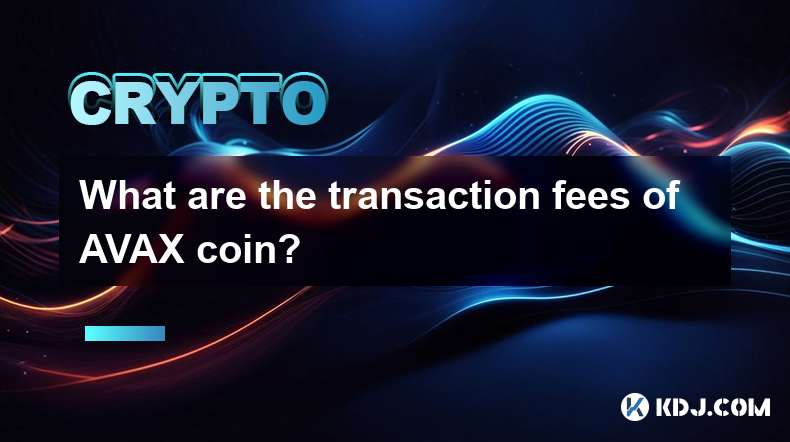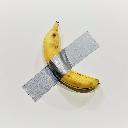-
 Bitcoin
Bitcoin $96,978.6627
3.40% -
 Ethereum
Ethereum $1,828.7461
3.60% -
 Tether USDt
Tether USDt $1.0003
0.05% -
 XRP
XRP $2.1309
1.95% -
 BNB
BNB $605.8251
1.79% -
 Solana
Solana $146.8081
3.11% -
 USDC
USDC $1.0000
0.01% -
 Dogecoin
Dogecoin $0.1723
4.32% -
 Cardano
Cardano $0.6732
4.06% -
 TRON
TRON $0.2474
1.41% -
 Sui
Sui $3.3559
4.70% -
 Chainlink
Chainlink $13.7300
3.57% -
 Avalanche
Avalanche $19.5274
0.57% -
 Stellar
Stellar $0.2601
2.62% -
 UNUS SED LEO
UNUS SED LEO $8.6845
-0.41% -
 Shiba Inu
Shiba Inu $0.0...01276
3.06% -
 Toncoin
Toncoin $3.0064
0.86% -
 Hedera
Hedera $0.1761
3.39% -
 Bitcoin Cash
Bitcoin Cash $364.9209
3.45% -
 Hyperliquid
Hyperliquid $21.1480
7.49% -
 Litecoin
Litecoin $90.8230
11.25% -
 Polkadot
Polkadot $3.9600
2.94% -
 Dai
Dai $1.0003
0.03% -
 Monero
Monero $283.5708
-1.02% -
 Bitget Token
Bitget Token $4.3015
-0.18% -
 Ethena USDe
Ethena USDe $1.0004
0.01% -
 Pi
Pi $0.5820
0.44% -
 Pepe
Pepe $0.0...08138
6.23% -
 Bittensor
Bittensor $363.9789
3.06% -
 OKB
OKB $50.8759
0.56%
What are the transaction fees of AVAX coin?
AVAX transaction fees are dynamic, varying with network congestion and transaction size. Users can adjust gas prices to influence speed and cost, with lower fees during off-peak hours. Understanding this system is key for efficient AVAX usage.
Mar 22, 2025 at 02:21 am

Key Points:
- Avalanche (AVAX) transaction fees are dynamic and depend on several factors, primarily network congestion and the size of the transaction.
- Fees are paid in AVAX and are typically low compared to some other Layer-1 blockchains.
- Users can influence transaction fees by adjusting the gas price (priority fee) they are willing to pay.
- Understanding fee structure is crucial for efficient and cost-effective AVAX transactions.
- Several factors contribute to the overall cost of an AVAX transaction beyond the base fee.
What are the transaction fees of AVAX coin?
Avalanche's transaction fees, paid in AVAX, aren't fixed. They fluctuate based on network demand. When the network is busy, more users are vying for transaction processing, leading to higher fees. Conversely, during periods of low activity, fees tend to be lower. This dynamic pricing mechanism ensures transactions are processed efficiently even under heavy load. Think of it like rush hour traffic; more cars mean slower speeds and potentially higher costs (in this case, higher transaction fees).
The primary factor determining the fee is the gas price, which represents the priority fee a user is willing to pay to have their transaction processed faster. A higher gas price increases the likelihood of quicker confirmation. The base fee, a mandatory component of the transaction cost, covers the network's operational costs. The total fee is the sum of the base fee and the priority fee. Therefore, a user has some control over the total cost.
Beyond the base and priority fees, the size of the transaction also impacts the cost. Larger transactions, such as those involving many assets or complex smart contracts, naturally incur higher fees. This is because they require more computational resources from the network to process. This is analogous to shipping a larger package; the cost is directly proportional to the size and weight.
To determine the precise fee for a specific transaction, users typically consult a block explorer or their chosen wallet. These tools provide real-time estimates based on current network conditions. It’s important to note that these estimates are just that – estimates. The actual fee might slightly vary depending on network fluctuations during the transaction processing. Always check before confirming the transaction.
The Avalanche network employs a novel consensus mechanism, Avalanche consensus, which contributes to its relatively low and predictable transaction fees. This mechanism efficiently validates transactions, resulting in faster processing times and reduced congestion compared to some other blockchain networks. This efficiency is a key factor in keeping fees manageable.
Several factors beyond network congestion influence transaction fees. For example, the complexity of the smart contract being executed significantly impacts the computational resources required, and thus, the cost. This applies to DeFi interactions, NFT transfers, and other sophisticated operations on the Avalanche network.
The relatively low average transaction fees on Avalanche are a significant advantage, attracting users and developers. Compared to some other Layer-1 blockchains, Avalanche generally offers a more cost-effective environment for various on-chain activities. This makes it a competitive platform for both individual users and businesses.
Understanding how to minimize transaction fees is important. Choosing off-peak times for transactions can help reduce costs significantly. Monitoring network congestion through block explorers can assist in identifying periods of lower demand. Also, optimizing transaction size by combining multiple smaller transactions into one larger transaction can potentially save money.
While the base fee is determined automatically by the network, users have considerable control over the priority fee. By setting a lower priority fee, users can save money but accept potentially longer confirmation times. Conversely, setting a higher priority fee ensures faster processing, though at a higher cost. The optimal balance depends on individual priorities.
It's worth noting that different wallets and exchanges may have their own fee structures added on top of the network fees. Always check the fees displayed by your chosen wallet or exchange before confirming a transaction. These added fees cover the service provided by the platform.
The Avalanche network constantly evolves, and its fee structure may undergo adjustments over time. Staying informed about any changes to the fee mechanism is essential for maintaining cost-effective transactions. Following official Avalanche announcements and community discussions can help stay updated.
Frequently Asked Questions:
Q: Are AVAX transaction fees fixed?
A: No, AVAX transaction fees are dynamic and fluctuate based on network congestion and transaction size.
Q: How can I reduce my AVAX transaction fees?
A: You can reduce fees by choosing off-peak times, optimizing transaction size, and adjusting the priority fee (lower priority means lower fees but slower confirmation).
Q: What factors influence AVAX transaction fees besides network congestion?
A: Transaction size, smart contract complexity, and the fees charged by wallets or exchanges all impact the overall cost.
Q: Where can I find real-time estimates of AVAX transaction fees?
A: Block explorers and your chosen wallet usually provide real-time fee estimates.
Q: Are AVAX transaction fees generally higher or lower compared to other Layer-1 blockchains?
A: AVAX transaction fees are generally considered low compared to many other Layer-1 blockchains.
Disclaimer:info@kdj.com
The information provided is not trading advice. kdj.com does not assume any responsibility for any investments made based on the information provided in this article. Cryptocurrencies are highly volatile and it is highly recommended that you invest with caution after thorough research!
If you believe that the content used on this website infringes your copyright, please contact us immediately (info@kdj.com) and we will delete it promptly.
- Sui Basecamp Took Place on the 1st and 2nd of May in Dubai
- 2025-05-07 21:20:12
- Pi Network Faces Major Pressure as 212.2M Pi Tokens Unlock This Month
- 2025-05-07 21:20:12
- Elon Musk's Meme Coin Influence Isn't What It Used to Be, Analysts Claim
- 2025-05-07 21:15:13
- Valour Launches Curve DAO (CRV) and Litecoin (LTC) ETPs
- 2025-05-07 21:15:13
- HYPE Looks Positioned to Retest Its ATH of $35
- 2025-05-07 21:10:13
- Bury 2.0 Promises to Transform the Shiba Inu Ecosystem with its New Staking Model
- 2025-05-07 21:10:13
Related knowledge

How to perform MOVE cross-chain transfer? What to do if the gas fee is too high?
May 07,2025 at 08:03pm
Introduction to MOVE Cross-Chain TransferCross-chain transfers have become an essential part of the cryptocurrency ecosystem, allowing users to move assets between different blockchain networks. One of the popular protocols for achieving this is the MOVE cross-chain transfer. This article will guide you through the process of performing a MOVE cross-cha...

Does DYDX support cross-chain? Is the transfer speed fast?
May 07,2025 at 05:56pm
Introduction to DYDXDYDX is a leading decentralized exchange (DEX) that primarily operates on the Ethereum blockchain. It is known for its advanced trading features, including perpetual contracts and margin trading. A common question among users is whether DYDX supports cross-chain functionality and how fast the transfer speeds are. In this article, we ...

How to open DYDX leverage? What is the maximum multiple?
May 07,2025 at 05:21pm
Opening leverage on DYDX can be an exciting way to potentially increase your returns in the cryptocurrency market. However, it's important to understand the process thoroughly and be aware of the risks involved. In this article, we'll walk you through the steps to open leverage on DYDX and discuss the maximum leverage multiple available. Understanding D...

How to top up and trade DYDX? What is the withdrawal fee?
May 07,2025 at 06:02pm
Introduction to DYDXDYDX is a decentralized exchange (DEX) that operates on the Ethereum blockchain, allowing users to trade cryptocurrencies without the need for intermediaries. It is known for its perpetual contracts, which are a type of derivative that allows traders to speculate on the price movements of various assets. To engage with DYDX, users ne...

Are KAVA transactions anonymous? What are the privacy protection measures?
May 07,2025 at 05:43pm
Are KAVA transactions anonymous? What are the privacy protection measures? KAVA is a blockchain platform designed to bring decentralized finance (DeFi) applications to the masses. As with many blockchain platforms, privacy and anonymity are significant concerns for users. This article delves into the anonymity of KAVA transactions and the privacy protec...

How to query KAVA transaction records? Is it convenient to export data?
May 07,2025 at 08:42pm
Introduction to KAVA and Transaction RecordsKAVA is a decentralized finance (DeFi) platform that operates on its native blockchain, offering services such as lending, borrowing, and staking. One of the critical aspects of managing your assets on the KAVA platform is the ability to query and export transaction records. This process can help users track t...

How to perform MOVE cross-chain transfer? What to do if the gas fee is too high?
May 07,2025 at 08:03pm
Introduction to MOVE Cross-Chain TransferCross-chain transfers have become an essential part of the cryptocurrency ecosystem, allowing users to move assets between different blockchain networks. One of the popular protocols for achieving this is the MOVE cross-chain transfer. This article will guide you through the process of performing a MOVE cross-cha...

Does DYDX support cross-chain? Is the transfer speed fast?
May 07,2025 at 05:56pm
Introduction to DYDXDYDX is a leading decentralized exchange (DEX) that primarily operates on the Ethereum blockchain. It is known for its advanced trading features, including perpetual contracts and margin trading. A common question among users is whether DYDX supports cross-chain functionality and how fast the transfer speeds are. In this article, we ...

How to open DYDX leverage? What is the maximum multiple?
May 07,2025 at 05:21pm
Opening leverage on DYDX can be an exciting way to potentially increase your returns in the cryptocurrency market. However, it's important to understand the process thoroughly and be aware of the risks involved. In this article, we'll walk you through the steps to open leverage on DYDX and discuss the maximum leverage multiple available. Understanding D...

How to top up and trade DYDX? What is the withdrawal fee?
May 07,2025 at 06:02pm
Introduction to DYDXDYDX is a decentralized exchange (DEX) that operates on the Ethereum blockchain, allowing users to trade cryptocurrencies without the need for intermediaries. It is known for its perpetual contracts, which are a type of derivative that allows traders to speculate on the price movements of various assets. To engage with DYDX, users ne...

Are KAVA transactions anonymous? What are the privacy protection measures?
May 07,2025 at 05:43pm
Are KAVA transactions anonymous? What are the privacy protection measures? KAVA is a blockchain platform designed to bring decentralized finance (DeFi) applications to the masses. As with many blockchain platforms, privacy and anonymity are significant concerns for users. This article delves into the anonymity of KAVA transactions and the privacy protec...

How to query KAVA transaction records? Is it convenient to export data?
May 07,2025 at 08:42pm
Introduction to KAVA and Transaction RecordsKAVA is a decentralized finance (DeFi) platform that operates on its native blockchain, offering services such as lending, borrowing, and staking. One of the critical aspects of managing your assets on the KAVA platform is the ability to query and export transaction records. This process can help users track t...
See all articles




















































































